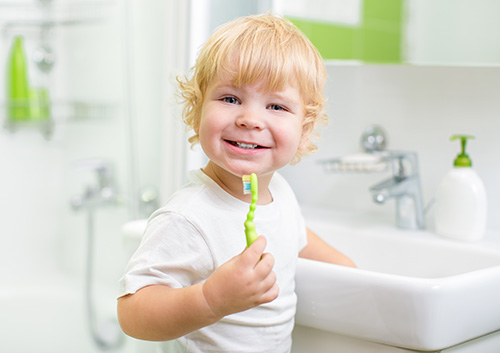Let’s Make Halloween Treats Less Tricky!
October 29th, 2025

If the scariest part of Halloween in Clarksburg, MD and Frederick, MD is trying to figure out which treats are braces-friendly and which treats are braces-frightful, we have a fiendishly simple suggestion to help keep your brackets and wires safe from harm: ghost any treats which are chewy, crunchy, hard, or sticky!
It’s no mystery how certain candies and treats can cause trouble for your braces. The pulling effect of chewy candies like caramels can pull a bracket right off your tooth. Biting into a hard candy can break a wire. Crunchy treats can get stuck under wires and damage braces. Sticky foods pull on your wires and brackets.
Broken braces are no fun. Loose or detached brackets can be uncomfortable. Bent or broken wires can cause sores and cuts inside your mouth. Damaged braces mean extra trips to the orthodontist for repairs, and can even delay your treatment if the damage is significant or you can’t see your orthodontist right away.
And chewy, crunchy, hard, and sticky treats have a haunting effect on your dental health as well. These foods stick to brackets and wires and can be difficult to brush or floss away. Cavity-causing bacteria feast on the sugars and food particles left behind, putting you at greater risk for cavities.
So, what specific treats should *vanish* from your candy collection this Halloween? Here are some of the most damaging to braces:
- Chewy caramels, taffy, fruit chews, gum, and licorice
- Crunchy candied apples, caramel popcorn, peanut brittle, nuts, and popcorn balls
- Hard and hard-shelled candies, lollipops (especially with gum centers), and jawbreakers
- Sticky gummies, jellybeans, and candy corn
But it’s not all frightful news! There are many spook-tacularly good treats which you can enjoy without putting your braces in jeopardy:
- Peanut butter cups
- Soft chocolate bars (with no nuts or caramel hiding inside!)
- Soft cupcakes
- Pudding cups
- Mint patties
- Ice cream
- Sugar-free gum (if it’s okay with Dr. Viney Saini and your orthodontist)
And here are a few good tricks for keeping your teeth and gums healthy, whether or not you wear braces:
- Brush and floss after treats.
- Enjoy sweets in moderation.
- Skip the sour candies. Acidic foods can damage tooth enamel.
- Eat treats with a meal. Eating increases saliva production, which helps neutralize acids and wash away food particles.
Don’t let a damaged bracket or wire spoil your Halloween fun. Talk to the team at Viney P. Saini Orthodontics to learn which candies are a treat for both you and your braces and you’ll stay on the fast track to a boo-tiful, healthy smile!



